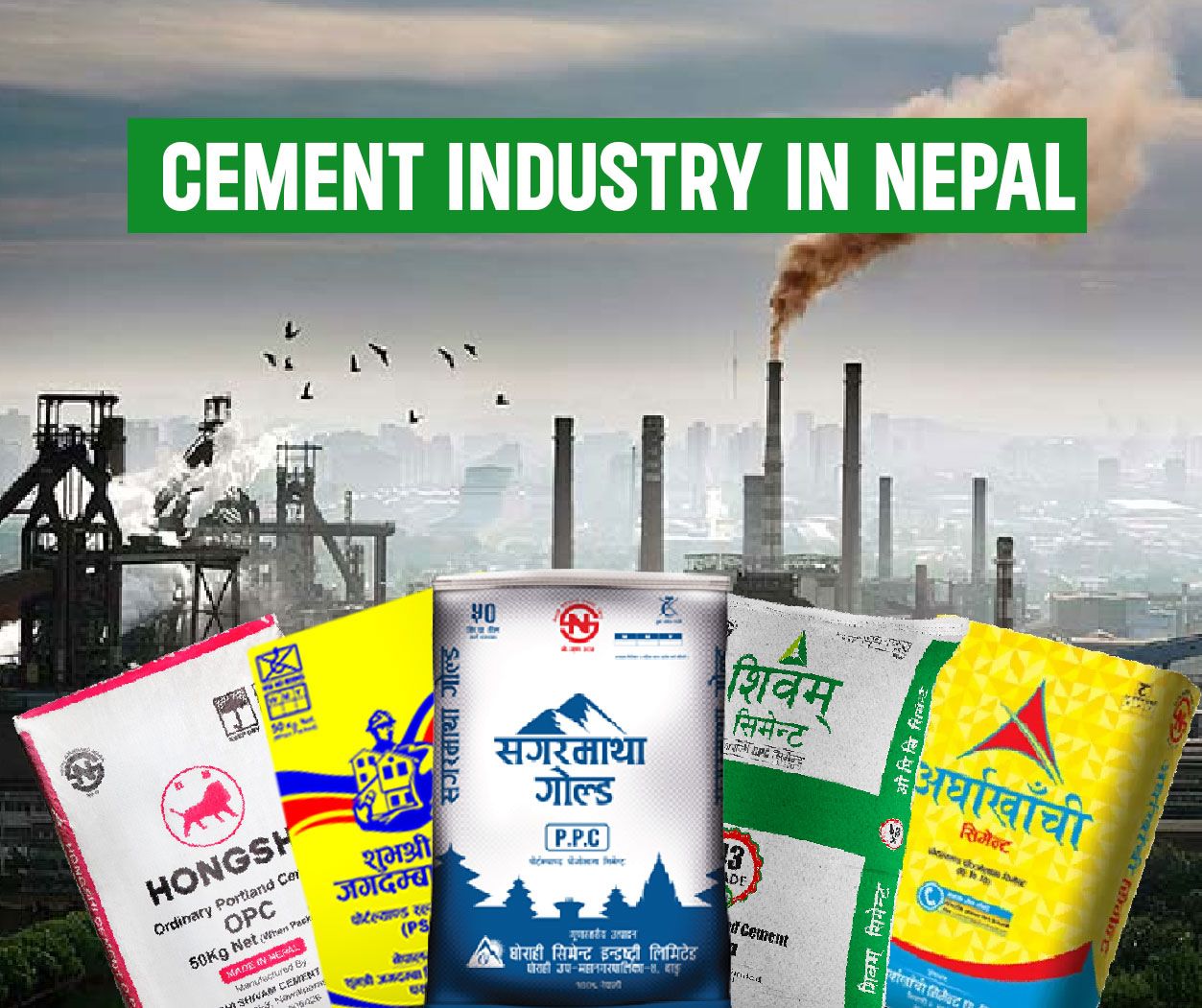Cement Industry in Nepal: An Overview

Prelude:
The year 2022 was characterized by a series of severe global shocks that deeply impacted the world economy. Majorly, Covid-19, Russia-Ukraine War, inflation, and supply chain disruption were responsible. Nepal as a nation, also faced significant hardships while navigating through this economic turmoil. Despite facing various challenges, including trade deficits and high production costs in almost all of its segments, the country's cement industry stands out as a potential beacon of hope for Nepal's economic recovery and export prospects.
This article provides an in-depth overview of Nepal's cement industry, exploring its current production capacity, burgeoning demand, clinker imports, export prospects, and the way forward for sustainable growth.
A Brief History:
The use of cement in Nepal can be traced back as early as the 1950s. Back in the time, Nepal heavily relied on India for its cement supply since there were no cement manufacturing industries within the country. However, in 1975, Nepal achieved a significant milestone with the establishment of first state-owned cement manufacturing plant, known as the Himal Cement Company Limited.
In the 1980s, Nepal's government focused on promoting industries like lumber, plywood, paper, cement, bricks, and tiles that used domestic raw materials to decrease reliance on imports. The rapid pace of infrastructure development and urbanization further fueled the demand for cement. As a result, its usage witnessed a notable increase, prompting the need for the expansion and development of the cement manufacturing sector in Nepal.
Current Production Capacity and Demand:
As per NRB May, 2021 study report, there are around 124 legally registered cement industries in the country out of which 55 cement industries are operational: 3 FDI-based, 2 government owned and 50 locally and privately owned. Besides, 2 FDI based industries are under construction. FDI-based cement industries seem to be more efficient and profitable than government-owned and locally owned ones.
A majority of these cement plants are concentrated in the Lumbini province, where 12 industries are in operation.
We have moved towards self-sufficiency in cement production in recent years. At present, the annual domestic demand for cement is around 11 million tons, while the production capacity has surpassed 22 million tons per year.
Despite the stated production capacity, annual actual cement production is only 7.49 million tons. Shortfall is being supplemented by imports.

*= Up to mid-June 2023 (Based on 11 months data)
Cement Includes: Hydraulic, Aluminous, Portland, White Portland, Clinkers
Data Source: https://nepaltradeportal.gov.np/web/guest/data-visualisation
Our cement import has been in decreasing trend since past few years supporting the credibility of our self-sufficient market.
Despite the decline in the import of both cement and clinker since 2019/20, there continues to be a significant quantity of imports. This is mainly attributed to challenges faced by domestic cement industries, such as certification difficulties, quality inconsistencies, and limitations in bulk supply capabilities.
Our country is committed in achieving the Sustainable Development Goals (SDGs) by 2030. As a result, there is an anticipated increase in the demand for cement and clinker in the coming years, driven by the desired growth in infrastructure development necessary to meet these goals.
Export Prospects:
In July 2022, Nepal marked a significant milestone by commencing its first-ever cement exports to India, sending an initial consignment of 3,000 bags.
Over the course of eleven months in previous fiscal year, Nepal's cement industry witnessed substantial export growth. According to the data from the Department of Customs for the First Eleven Months of FY 2079/80 (Mid-July 2022 to Mid-June 2023), Nepal's cement exports amounted to a total value of Rs. 288.46 million. This figure includes both Cement clinkers and Portland cement in the calculation
The Department further reported that the quantity of clinker exported stood at 388,277 tons, while the Portland cement exports amounted to 504,844 tons during the same seven-month period.
Industrialists believe that Nepali cement products face stiff price competition in the Indian market. However, export of cement to Indian market is expected to reduce the trade deficit of Nepal with India by 15% in the near future. Moreover, experts on cement claim it’s export value currently surpasses all other products combined.
In the 2022/23 budget, the government offered an 8% subsidy in cash to companies exporting cement using Nepali raw materials. This policy provided relief to the cement industry and motivated its business owners to increase their export activities. As a result, we are now seeing a surge in cement exports.
Way Forward
The Nepalese cement industry has come a long way, transitioning from import dependence to becoming early exporters. Our government should use this progress as motivation and continue supporting the industry with incentives and favorable market policies. Encouraging more production houses and attracting FDIs will fuel further growth.
To seize the rising export opportunities in time, the industry must upgrade production processes and ensure better product quality for enhanced competitiveness. Investing in efficient transportation and maintaining strong diplomatic ties with India for smooth coal transportation and export has now become crucial, more than ever.
By taking these actions, the cement industry can meet domestic demand, become a key regional player, reduce trade deficits, and drive a sustainable economic growth.
